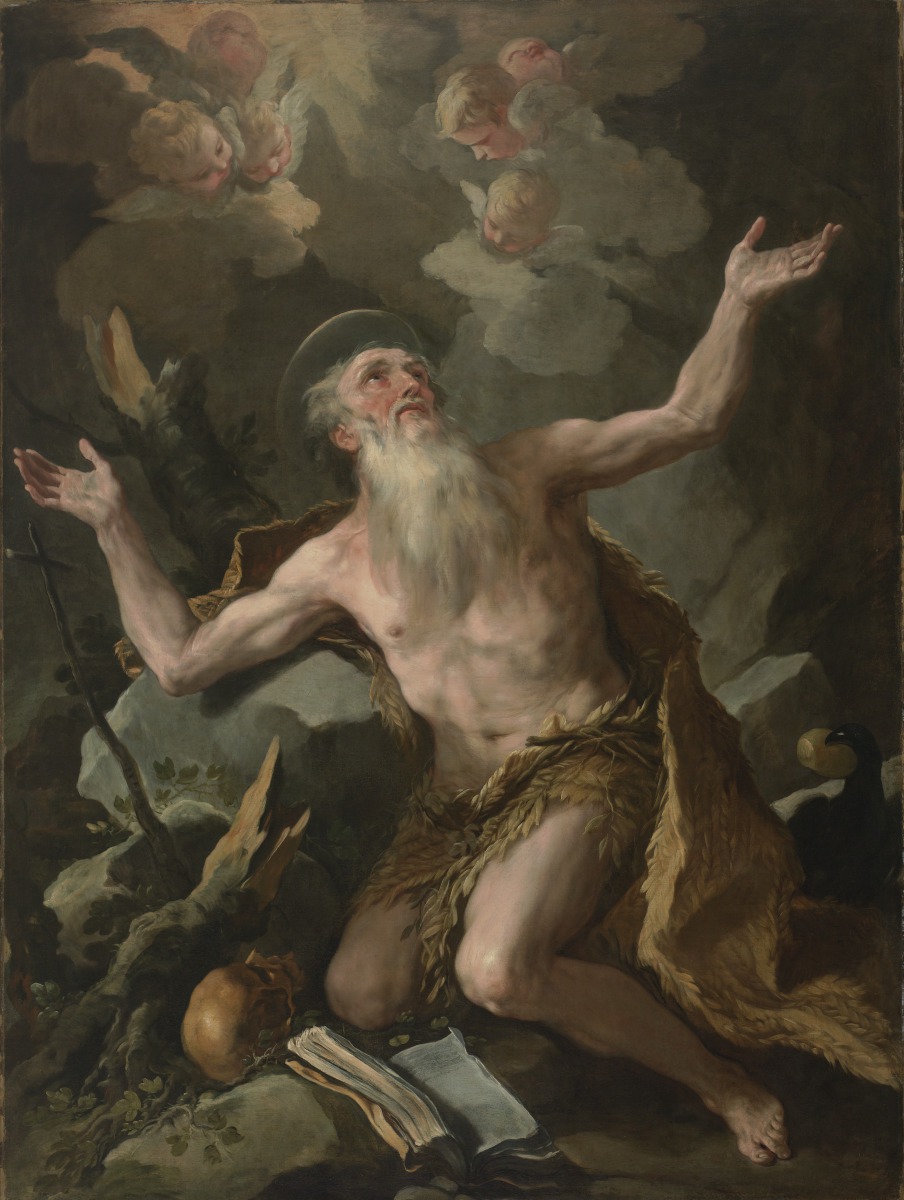
St. Paul the Hermit (Primary Title)
Luca Giordano, Italian, Neopolitan, 1632 - 1705 (Artist)
St. Paul the Hermit was the first of the hermit saints, men whose devout lives made them models for Christian monasticism. In the third century A.D., Paul fled into the Egyptian desert to escape the persecutions of Emperor Decius; there he lived a life of austere contemplation. He wore only a garment of woven palm leaves and survived on bread that a raven miraculously brought to him daily.
Baroque artists, following the edicts of the Counter-Reformation, tried to make the images of saints and the emotional drama of sacred events as immediate and real to the worshiper as possible. Giordano’s painting of St. Paul faithfully records the effects of age and physical hardship on the saint’s face and body. The large figure nearly fills the frame – his knee even seems to protrude into the viewer’s space.
However, this is a painting about a real man meeting with his God; accordingly the heavenly vision toward which the saint turns in ecstasy illuminates the painting with an unearthly brilliance.
Some object records are not complete and do not reflect VMFA's full and current knowledge. VMFA makes routine updates as records are reviewed and enhanced.

